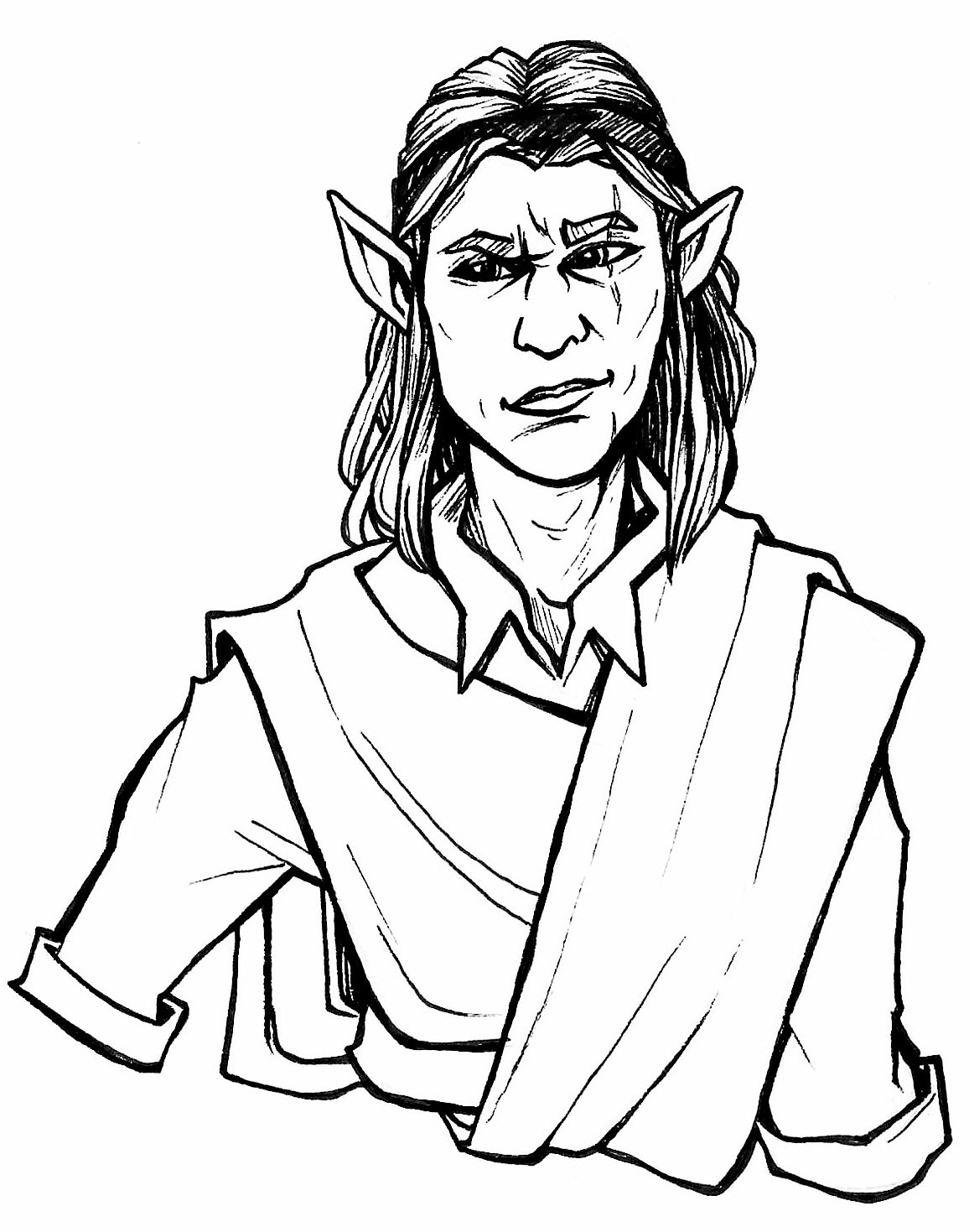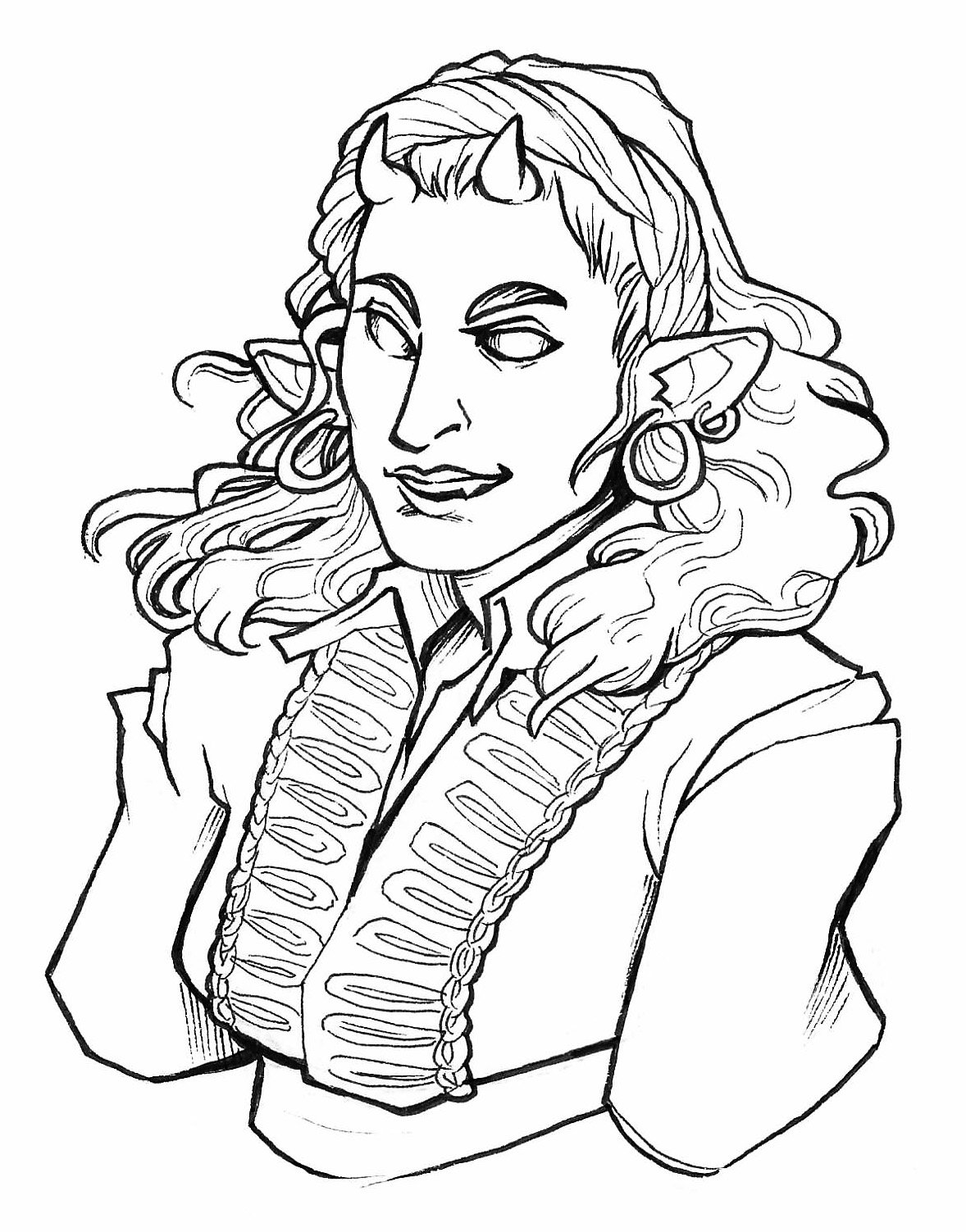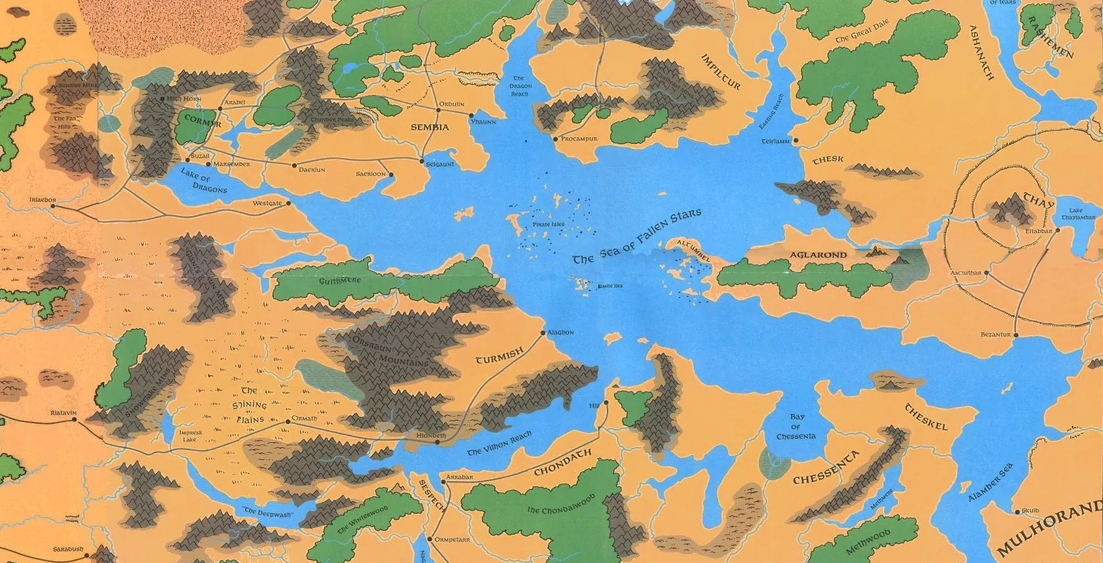Patrons of the Alexandrian can now download a collected edition of the Dragon Heist Remix. This includes:
- The Complete Collection, a PDF with all 25 parts of the Remix plus the original review, addendums, and Running the Campaign essays in one convenient file.
- Justin’s Running Files, a Patron-exclusive collection of the documents I actually used to run the campaign (as described in Part 7 of the Remix). These are presented in Word format for easy editing and re-arranging to your heart’s content.
THE COMPLETE COLLECTION
The Complete Collection contains every single article from the Dragon Heist Remix — all 25 parts, the original review, 8 addendums, and 4 Running the Campaign articles — that have been posted to the Alexandrian to date. It currently stands at 110,000 words and 318 pages.
In addition to updating the previous Preview Draft to include all of the Remix material (including corrections previously only available on the website), this release also reformats everything into the new-and-improved Alexandrian PDF format.
JUSTIN’S RUNNING FILES
This zip file contains the final campaign-ready files I prepared for actually running the campaign.
What’s the difference between this and what appeared on the website?
First, a lot of my general discussion about WHY things were designed the way they were designed have been stripped out. I’ve also removed a lot of the discussion about HOW various tools can be used during play. (I know how this stuff is supposed to be used… and so do you if you’ve read the whole series.)
Second, additional reference material has been added where appropriate to ease my mental load during play.
Third, light revisions based on actual play (some, but not all of which got reflected onto the web pages) have been added.
Fourth, and probably most imporantly, organization: The Remix series on the Alexandrian was written as a design-oriented discussion that ambitiously grew into a much more prodigious project than I had originally anticipated. The original organization was not designed for use at the table, and became even less useful for such as time went on.
The running files are organized for play: The first three chapters of play are clearly broken out, each heist is given its own focused file, and so forth. I’m pretty sure you’ll be able to just look at the file list and instantly grok how they’re meant to be used.
The only thing to particularly call out, I think, is that the props for each scenario can be found at the end of the file. You’ll note that these are files are “watermarked” with the numerical code for the chapter (for example, “DH1 Props”). Why? Well, there are a lot of props. Something I learned when running my Ptolus campaign (which has literally HUNDREDS of props) is that my players will often ask me questions about a prop which they received weeks, months, or even years earlier, and I won’t necessarily remember exactly where they got that specific handout. I learned to mark on the prop what scenario they came from (using a numeric code which doesn’t spoil anything for the players) so that I could quickly and easily locate my notes regarding the prop.
These files remain dependent on actually owning a copy of the Dragon Heist book, of course.
WHY’D THIS TAKE SO LONG?
People have been asking me for a collected edition of the Dragon Heist Remix for a little over a year. Why’d it take so long?
First, I was hoping to authoritatively finish the Remix before collecting everything. (I probably haven’t. I still have a list of value-add addendums that I’d like to create at some point.)
Second, and more importantly, the Dragon Heist Remix was the last major project I launched on the Alexandrian before completely revamping my workflow. (And I revamped it largely in response to the problems I had with the Remix.)
For over a decade, I had been drafting copy for the Alexandrian in a vanilla Word file. My basic process can honestly be traced even further back, to when I was writing reviews for RPGNet (circa 1998). It had evolved over time, but was fundamentally the same thing. This draft would include notes like “ADD LINK to [hyperlink]” and “[INSERT PIC HERE]”, which would be implemented only as I transferred the draft onto the website. As a result, the website became the “definitive” copy, and if I spotted errors or needed to make updates, I would make them directly to the website.
When I started my Patreon in 2015, this inadvertently led to a Rube Goldbergian process in which I would:
- Do my traditional draft in Word.
- Transfer the draft to the website to create the “definitive” version.
- Copy the definitive version off the website into a new Word file, reformat it, and generate the Patron-exclusive PDF.
In addition, I still considered the version on the website to be definitive, so when I noticed errors or needed to make updates, I would only make them on the website. The PDF version (and the Word document it was based on) was a “dead” document — it existed to be distributed once, but once it was forked it was done.
In March 2019, I revamped the formatting of the Patreon-exclusive PDFs. There were a couple reasons for this:
- It was prettier.
- I was reworking the format so that I could draft the definitive version of an essay in it and then, with far less effort, transfer it to WordPress before generating the PDF from the same file.
One source document instead of a sequential process with a dead fork.
What had finally motivated me to trash my twenty-year-old web-copy writing process was the Dragon Heist Remix. I wrote the whole Remix in a single Word file, but I was (a) following my old workflow and (b) uploading installments as they were complete (rather than waiting for the whole series to be done). This kind of “post as I’m writing” approach had become more common after launching my Patreon. Back when I wrote the Game Structures series, for example, I’d written and polished the entire series before posting it… which meant that there had been a 10 week gap in which no new content was appearing on the site and then the whole thing appeared in like a week and a half. That approach didn’t work with Patreon, so I could either abandon long series (bad idea) or figure out how to serialize their creation.
But this meant that each installment would be:
- Written up in my draft document.
- Posted to the website.
- And then, because the website was the definitive edition, any future changes or additions to those installments would only be made on the website, even while I was continuing to draft new content into the draft document.
Which, of course, meant that I did not have a file that contained the actual Remix. I had a weird reverse-palimpsest in which the earliest sections of the document grew more and more out of date as the Remix evolved.
My twenty-year-old process was no longer rickety. It was broken.
Thus, the fundamental revision.
The Avernus Remix, in particular, has benefited from this: The definitive version of the Remix is written up in a single file and I am scrupulous in making sure that any corrections on the website are simultaneously made in that document (and vice versa). This has allowed me to effortlessly produce regularly updated collected editions as the Remix has evolved. (Looks like I’ve done 15 of them to date.)
But the Dragon Heist Remix was still in a rather hopeless state. Back in 2019, as the core of the Remix was wrapping up, I did my best to provide something workable via my running files and a Preview Draft that attempted to correct my draft document as much as possible to reflect the “definitive” version on the website, but it was clearly a stopgap effort.
Creating the Complete Collection, however, meant pulling all the content back down from the website, reformatting it, and then proofreading it. This was not particularly difficult work, but it was incredibly time-consuming — remember the bit where I said it was 318 pages and 110,000 words? — particularly if it was going to be done right. (And what would be the point if it wasn’t done right?)
I actually started work on this at the end of February 2020, at the same time I started working on Dragon Heist: The Final Session. Checking my calendar, I see that was actually the same day I started live-tweeting my reaction to Descent Into Avernus. A couple weeks later I started the Avernus Remix… and then literally the day before the first Avernus post went live, we went into COVID-19 quarantine. Three days later, my wife was in the hospital with an infection from the surgery she’d had the week before, which would lead to another surgery, which would lead to a cancer diagnosis, which would lead to chemotherapy, which would…
Shit. That got dark fast.
But everything’s fine now (except the general background malaise of 2020), most especially my wife. I’ve been slowly chipping away at this project all along, so I’m very excited to finally be able to get these collected editions out to people who have been hoping to see them for a very long time now. And my apologies to anyone who wasn’t able to get them in time to be of use in their own campaign.






 asked me how much money I thought I could get for my mother. And I was like, ‘Thirty thousand gold pieces? How much could thirty thousand be, right?’”
asked me how much money I thought I could get for my mother. And I was like, ‘Thirty thousand gold pieces? How much could thirty thousand be, right?’”











